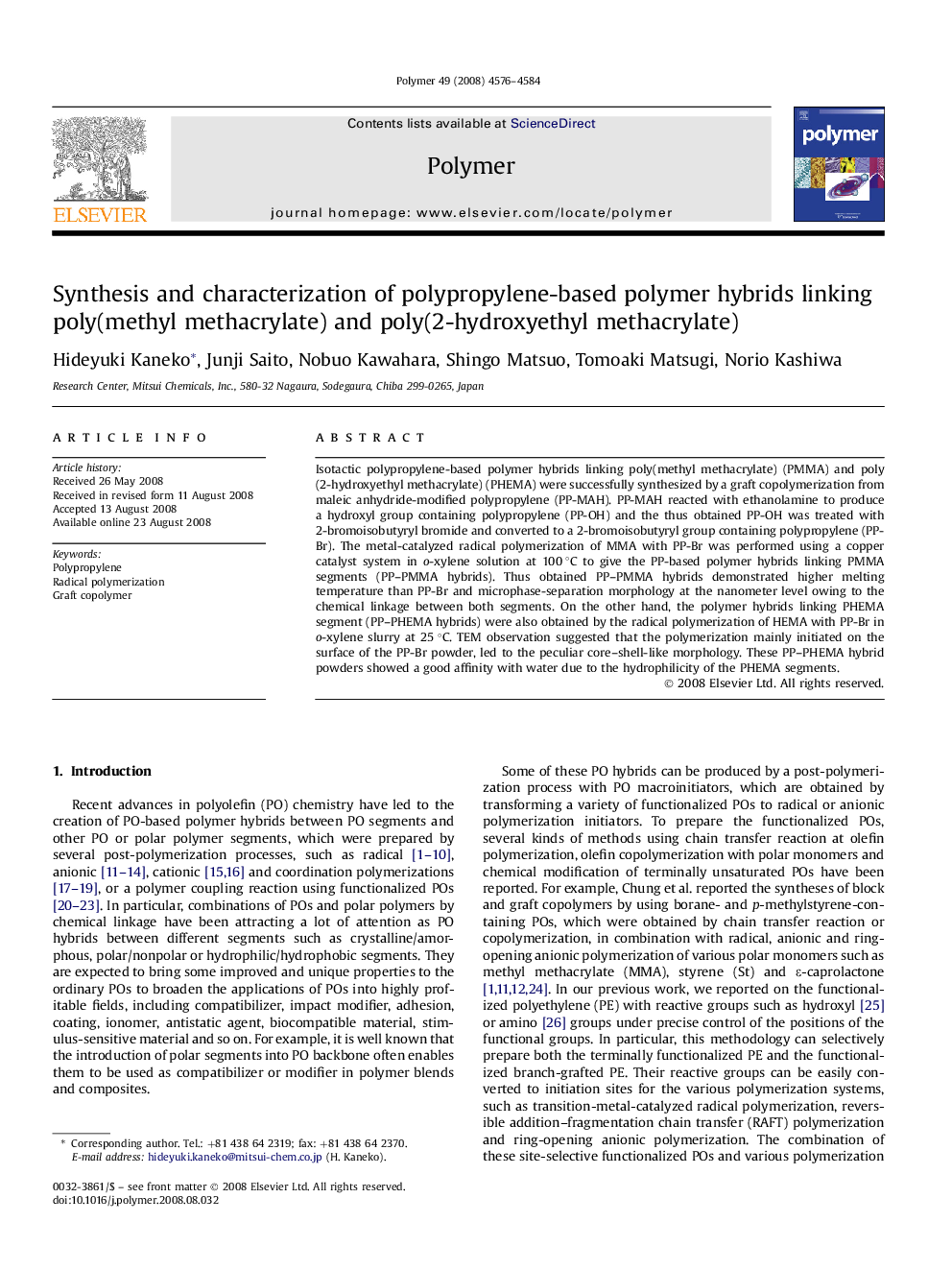| Article ID | Journal | Published Year | Pages | File Type |
|---|---|---|---|---|
| 5186623 | Polymer | 2008 | 9 Pages |
Isotactic polypropylene-based polymer hybrids linking poly(methyl methacrylate) (PMMA) and poly(2-hydroxyethyl methacrylate) (PHEMA) were successfully synthesized by a graft copolymerization from maleic anhydride-modified polypropylene (PP-MAH). PP-MAH reacted with ethanolamine to produce a hydroxyl group containing polypropylene (PP-OH) and the thus obtained PP-OH was treated with 2-bromoisobutyryl bromide and converted to a 2-bromoisobutyryl group containing polypropylene (PP-Br). The metal-catalyzed radical polymerization of MMA with PP-Br was performed using a copper catalyst system in o-xylene solution at 100 °C to give the PP-based polymer hybrids linking PMMA segments (PP-PMMA hybrids). Thus obtained PP-PMMA hybrids demonstrated higher melting temperature than PP-Br and microphase-separation morphology at the nanometer level owing to the chemical linkage between both segments. On the other hand, the polymer hybrids linking PHEMA segment (PP-PHEMA hybrids) were also obtained by the radical polymerization of HEMA with PP-Br in o-xylene slurry at 25 °C. TEM observation suggested that the polymerization mainly initiated on the surface of the PP-Br powder, led to the peculiar core-shell-like morphology. These PP-PHEMA hybrid powders showed a good affinity with water due to the hydrophilicity of the PHEMA segments.
Graphical abstractDownload full-size image
